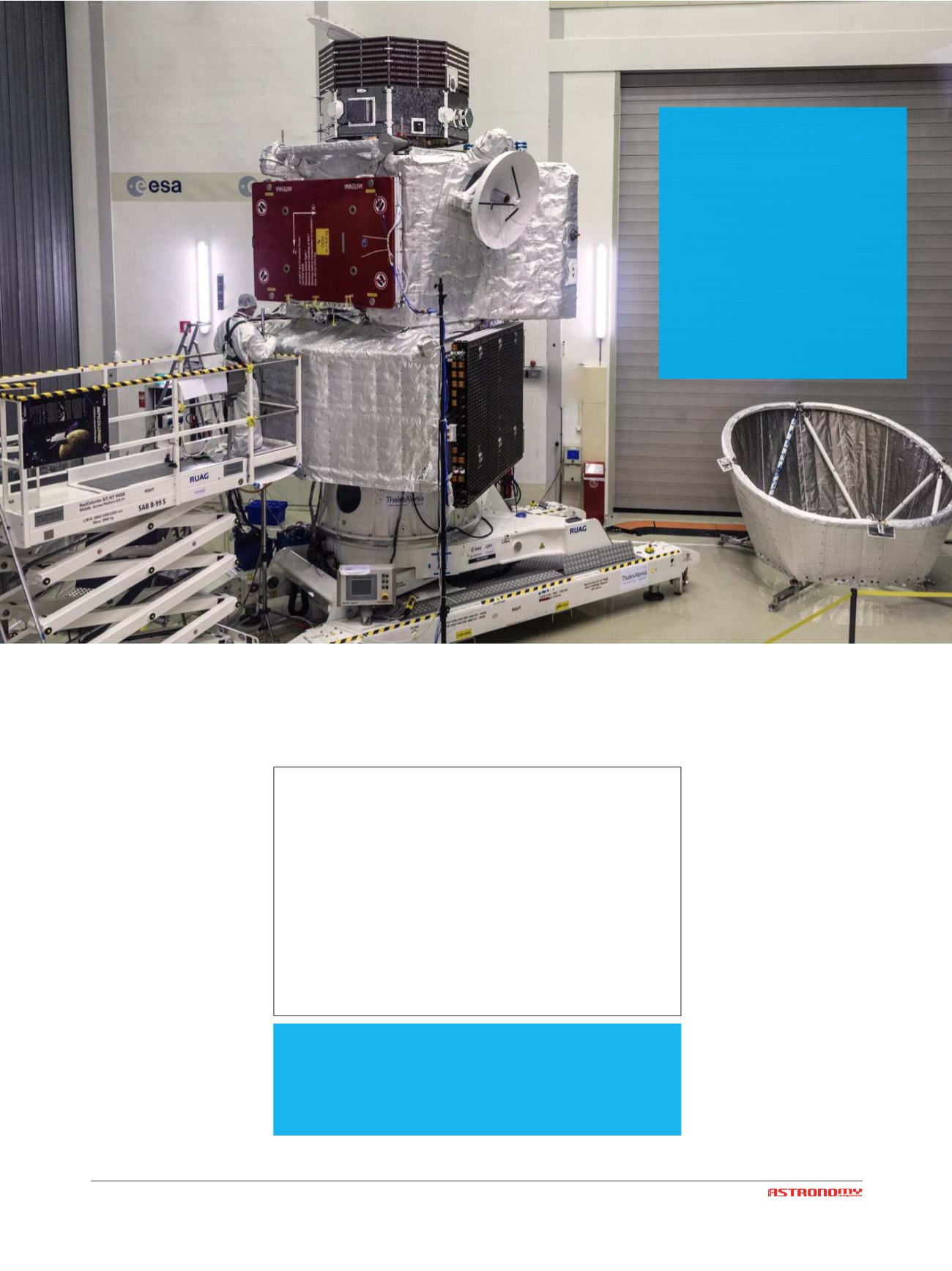

SEPTEMBER-OCTOBER 2017
on deploying the solar wings, and
the mechanisms that lock each
panel in place. The 7.5 m-long array
of the Mercury Planetary Orbiter
and the two 12 m-long array of the
Mercury Transport Module will be
folded while inside the
Ariane 5 rocket. In June,
the full spacecraft stack
was tested inside the
acoustic chamber, where
the walls are fitted with
powerful speakers that
reproduce the noise of
launch. In July, tests mim-
icked the intense vibra-
tions experienced by a
satellite during launch.
The complete stack was
shaken at a range of fre-
quencies, both in up-
down and side-to-side
motions. These were the
final tests to be com-
pleted with BepiColom-
bo in mechanical launch
configuration, before it
is reassembled again at
to Mercury. The final ‘qualification
and acceptance review’ of the mis-
sion is foreseen for early March.
Then BepiColombo will be flown
to Europe’s Spaceport in Kourou,
French Guiana, in preparation for
the October 2018 depar-
ture window. The date
will be confirmed later
this year.
“This vibrations test was
the last opportunity to
see the spacecraft in its
stacked launch configu-
ration before it leaves
Europe. The next time
will be when we are at
the launch site already
fueled,”
says Ulrich Rein-
inghaus, ESA’s BepiCo-
lombo Project Manager.
“This is quite a milestone
for the project team.
We are looking forward
to completing the final
tests this year, and ship-
ping to Kourou on
schedule.”
the launch site. Subsequently the as-
sembly was dismantled to prepare
the transfer module for its last test
in the thermal–vacuum chamber.
This will check it will withstand the
extremes of temperatures en route
A
nimation visualising BepiColombo’s 7.2 year journey to Mer-
cury. This animation is based on a launch date of 5 October,
marking the start of the launch window in October 2018. It illus-
trates the gravity assist flybys that the spacecraft will make at
Earth, Venus and Mercury before arriving at Mercury in Decem-
ber 2025. [ESA - European Space Agency, CC BY-SA 3.0 IGO]
!
T
he complete BepiColombo space-
craft stack on 5 July 2017. From
bottom to top: the Mercury Transfer
Module (sitting on top of a cone-
shaped adapter, and with one folded
solar array visible to the right); the
Mercury Planetary Orbiter (with the
folded solar array seen towards the
left, with red protective cover), and
the Mercury Magnetospheric Orbiter
(MMO). The Mercury Magnetospheric
Orbiter’s Sunshield and Interface
Structure (MOSIF) that will protect the
MMO during the cruise to Mercury is
sitting on the floor to the right.
[ESA–C. Carreau, CC BY-SA 3.0 IGO]
















